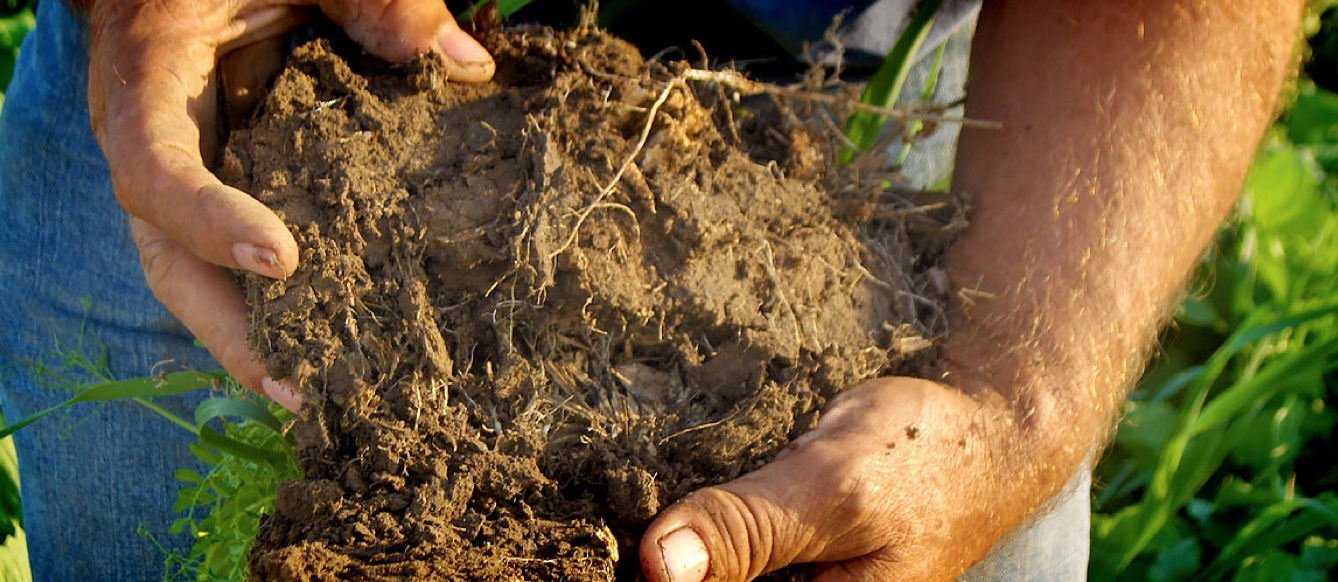October 7, 2016 | Posted in Crop Protection, Residue Management, Soil Health
Source: South Dakota State University Extension

Although many landowners may not give much thought to weed control as a soil health measure, Gared Shaffer, SDSU Extension Weeds Field Specialist said the two go hand-in-hand.
“The same management practices which increase soil health, like planting cover crops or a diverse cash crop rotation, also can be deterrent to weeds,” Shaffer explained. With the rise of herbicide resistant weeds not just on the horizon but in your fields, farmers want answers. Most have turned to a new herbicide in the past.
He referenced a quote from Dr. Dwayne Beck, manager of the Dakota Lakes Research Farm. Beck presented during a recent soil health workshop hosted by South Dakota Soil Health Coalition.
“Anytime producers do the same thing year after year the Earth’s ecosystem finds a way around it to make it more diverse” said Beck during the September meeting attended by farmers, ranchers and area agronomy professionals.
Without this diversity, Beck further explained that monoculture farming will give way to a possible proliferation of curtain weed species.
“This means a potential increase in weed species anytime monoculture crops are planted,” Shaffer explained.
Shaffer said many options are still within the hands of producers to control weeds with herbicides however, he explained that 100% herbicide dependence is not sustainable in the long term. Particularly with the products available in the market today.
“Herbicides were meant to be just a tool for weed control not the answer to weed control,” he said.
More Weed Control Options
Some of the weed control options discussed during the soil health school which did not include spraying herbicides or tillage included; crop rotation, cover crops and livestock integration.
“These options help build soil health by increasing organic matter, soil biology and water infiltration,” Shaffer said.
He outlined the principals of soil health:
- Armor on soil surface
- Very limited soil disturbance
- Livestock integration
- Plant diversity
- Soil covers
Shaffer explains each principal below.
Armor on soil surface: If there is armor on the soil surface, such as organic matter or a cover crop, then weed seed germination and competition will be limited.
Very limited soil disturbance: With increased soil disturbance (including any tillage) Shaffer explained, comes more weeds, colder soils and dryer soils than in long term no-till fields.
Livestock integration: Livestock integration can elevate the need for pasture, but can increase soil health and decrease weeds in your operation through grazing at the proper time in your rotation.
Plant diversity: Crop rotation of many monoculture crops with integration of cover crops can be the best way to deal with weeds, especially herbicide resistant weeds.
“Finding the right crop or cover crop to compete with a curtain weed is the best option available instead of always reaching for that herbicide in your barn,” Shaffer said. “Each producer must customize their rotation to fit their local ecosystem.”
Crop rotations change, but the principles do not, Shaffer said. The top principles of crop rotation include:
- Proper water utilization;
- Proper Intensity throughout year; and
- Adequate diversity.
- Shaffer encouraged landowners to attend the 2017 soil health workshop hosted by South Dakota Soil Health Coalition. For more information, visit the South Daktoa Soil Coalition website.
For more information about crop rotation benefits visit the Dakota Lakes Research Farm website and under the publication tab read the article: Managing Agricultural Ecosystems by Dwayne Beck Ph.D. [fusion_builder_container hundred_percent=”yes” overflow=”visible”][fusion_builder_row][fusion_builder_column type=”1_1″ background_position=”left top” background_color=”” border_size=”” border_color=”” border_style=”solid” spacing=”yes” background_image=”” background_repeat=”no-repeat” padding=”” margin_top=”0px” margin_bottom=”0px” class=”” id=”” animation_type=”” animation_speed=”0.3″ animation_direction=”left” hide_on_mobile=”no” center_content=”no” min_height=”none”][Emphasis added]
To see full article click here.
Comments by Joe Dedman – Monty’s Plant Food Co. –
Monty’s has many products that will contribute to increasing soil health which in turn contributes to better weed control and overall plant health. The way to correct weed control and disease issues in in building up the eco-system which is the soil health environment. You change the structure, texture and microbial system in the root zone and the weeds and disease cannot survive in that environment. [/fusion_builder_column][/fusion_builder_row][/fusion_builder_container]



